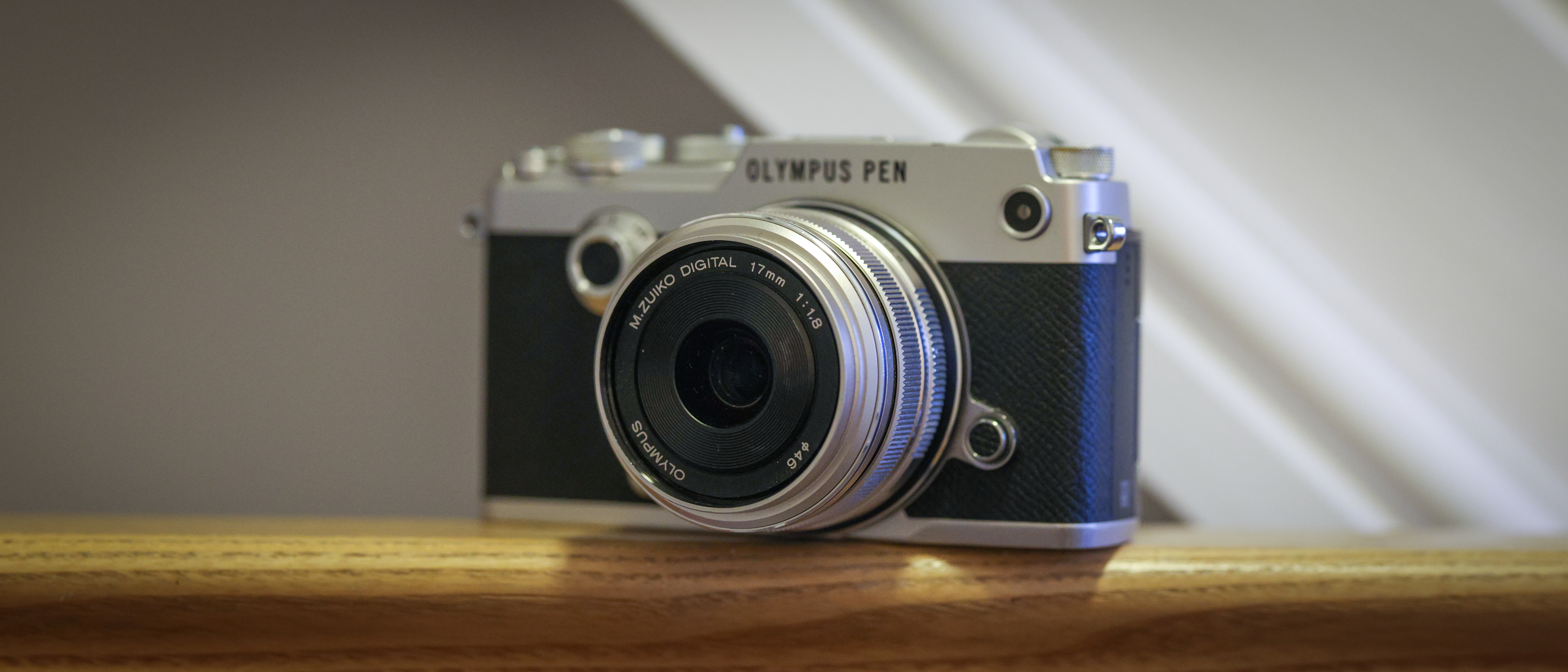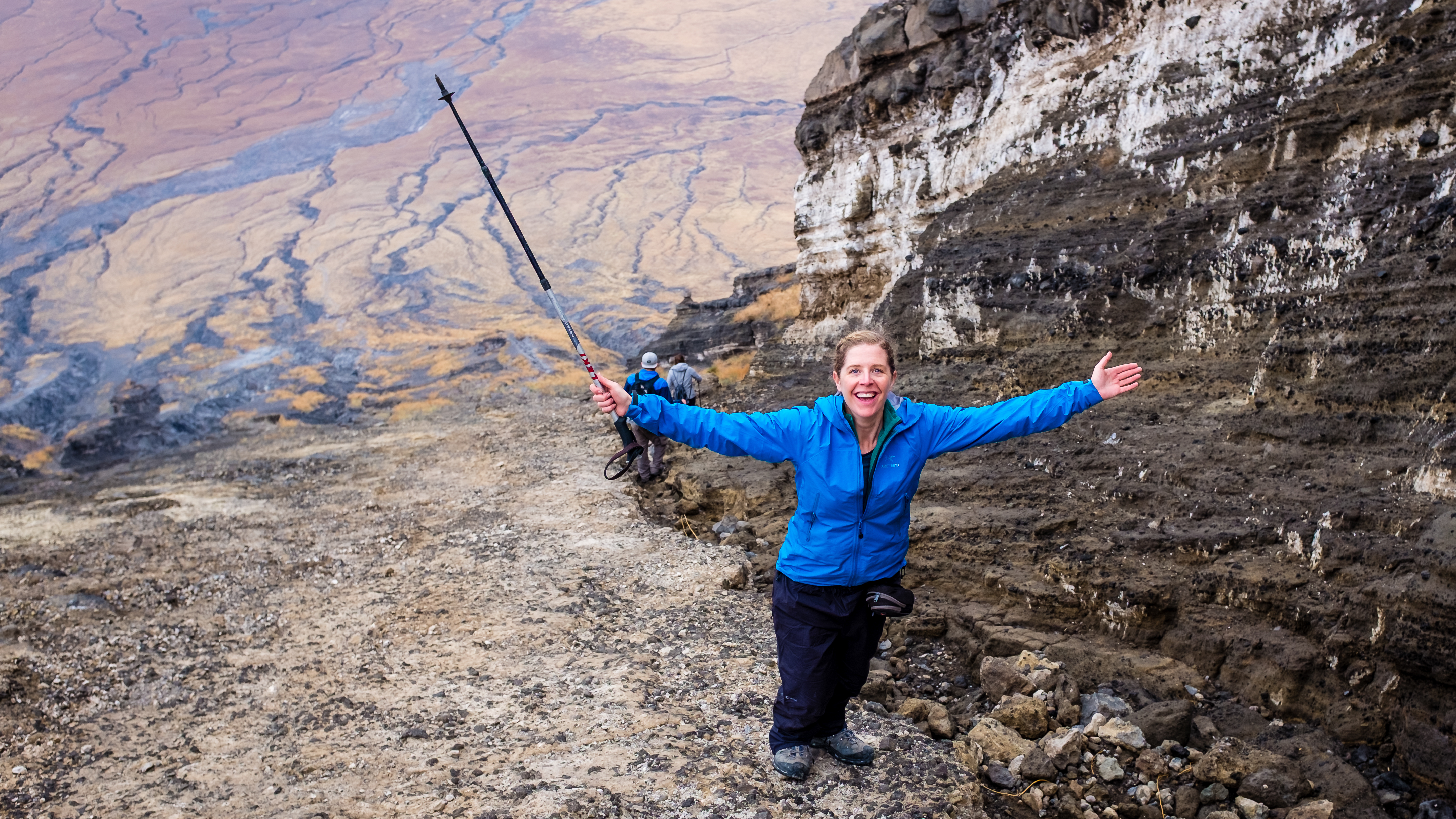Digital Camera World Verdict
Available in black or silver, the Olympus M.Zuiko 17mm f/1.8 is barely bigger than a pancake lens. Thanks to the 2x crop factor of Micro Four Thirds cameras, it has an entirely natural, slightly wide viewing perspective, similar to a 35mm lens on a full-frame camera. Focusing is elegant both in auto and manual focus modes and it’s super lightweight despite featuring a high-quality metal build. All in all, it’s a great lens for walkabout shooting and for candid street photography.
Pros
- +
Useful focal length
- +
Fast f/1.8 aperture
- +
Small, lightweight construction
Cons
- -
No weather-seals
- -
Pricey hood sold separately
Why you can trust Digital Camera World
The Olympus M.Zuiko 17mm f/1.8 has been replaced by the new OM System M.Zuiko 17mm f/1.8 II. The new lens features identical optical construction and performance, comes with a lens hood, and is now weather-sealed – however, it no longer has the manual focus clutch and distance scale that was a signature of the original Olympus lens. Read my collague James' full review for more information on the new version.
With an effective focal length of 34mm, the Olympus M.Zuiko 17mm f/1.8 is almost the same as using a 35mm f/1.8 lens on a full-frame camera, at least in terms of field of view. That’s where the similarity ends, however, as the Olympus is comparatively tiny, measuring just 36mm long and weighing in at a mere 120g.
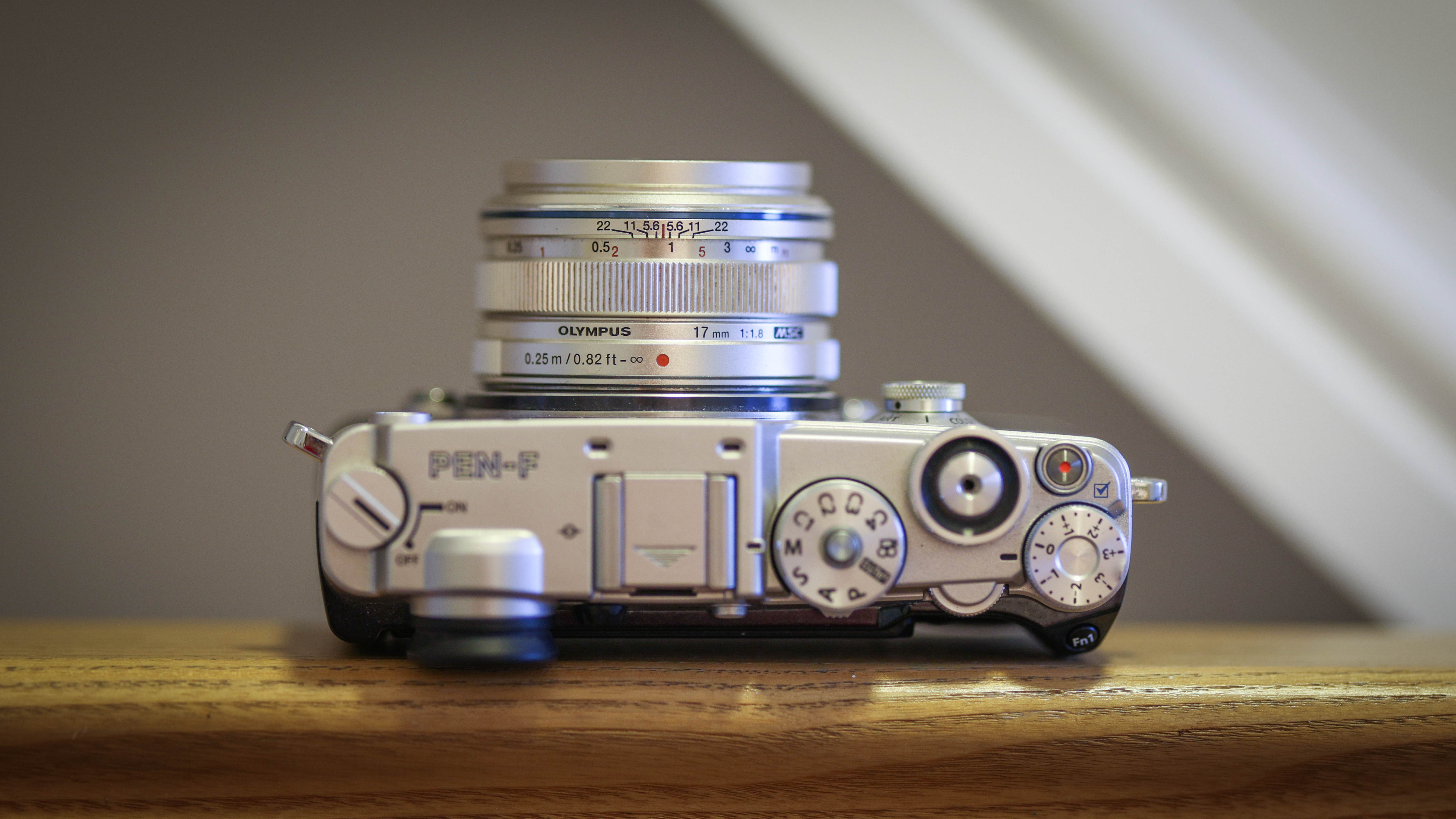
Olympus M.Zuiko 17mm f/1.8 review: Specifications
Mount: Micro Four Thirds
Full-frame: No
Autofocus: Yes
Stabilization: No
Lens construction: 9 elements in 6 groups
Angle of view: 65 degrees
Diaphragm blades: 7
Minimum aperture: f/22
Minimum focusing distance: 0.25m
Maximum magnification ratio: 0.08x
Filter size: 46mm
Dimensions: 58x36mm
Weight: 120g
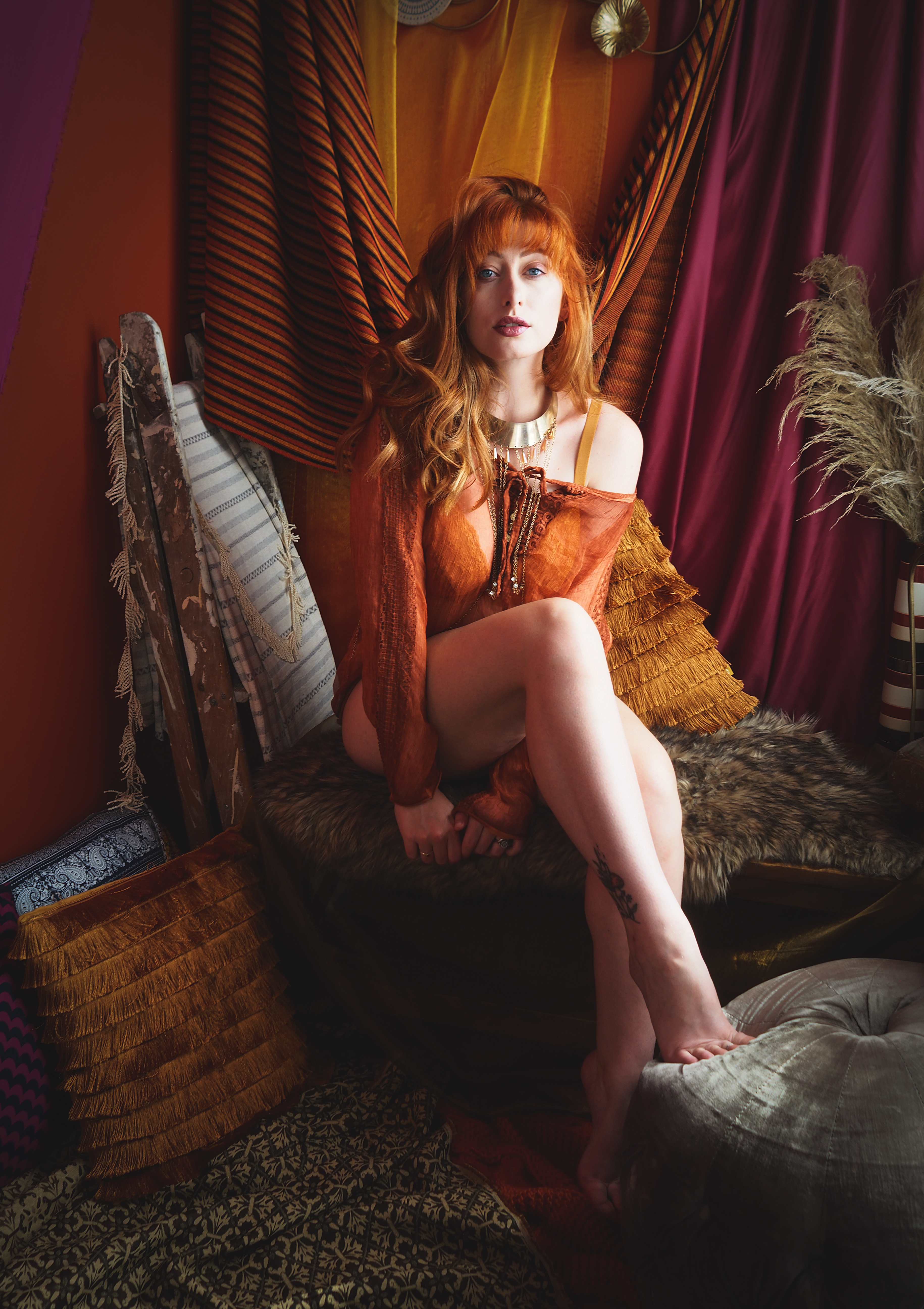
Olympus M.Zuiko 17mm f/1.8 review: Key features
A key contributor in the downsized design of the Olympus M.Zuiko 17mm f/1.8 is the optical layout, which includes two aspherical elements and a further ‘dual super aspherical’ element. A high refractive index element is also included in the total count of nine elements arranged in six groups. The overall aim is for good sharpness, contrast and color rendition with the minimum of unwanted aberrations.
The stepping motor-based autofocus system is typically quick for stills and smooth for video, while also being virtually silent in operation. Manual focusing is also a particular joy with this lens. A built-in clutch mechanism enables you to pull the manual focus ring backwards, not only to engage manual focus mode but also to reveal a focus distance scale, which comes complete with depth of field markers for f/5.6, f/11 and f/22, making zone focusing available.
Thanks to the f/1.8 aperture rating, you can maintain fairly fast shutter speeds even under low lighting conditions, without needing to bump up the camera’s ISO setting too much. It’s a bonus for freezing movement as well as for avoiding camera shake in Micro Four Thirds cameras that lack in-body stabilization. It also allows for a fairly tight depth of field, at least when shooting close-ups.
Build quality is impressive, despite the small, lightweight construction of the lens. It feels robust and well-engineered, although it doesn’t feature any weather seals.

Olympus M.Zuiko 17mm f/1.8 review: Performance
Sharpness is very good in the central region of the frame but less impressive towards the edges and corners. Like other lenses for the Micro Four Thirds system, firmware delivers automatic correction for color fringing and distortion, both of which are virtually non-existent as a result.
Olympus M.Zuiko 17mm f/1.8 review: Lab results
We run a range of lab tests under controlled conditions, using the Imatest Master testing suite. Photos of test charts are taken across the range of apertures and zooms (where available), then analyzed for sharpness, distortion and chromatic aberrations.
We use Imatest SFR (spatial frequency response) charts and analysis software to plot lens resolution at the center of the image frame, corners and mid-point distances, across the range of aperture settings and, with zoom lenses, at four different focal lengths. The tests also measure distortion and color fringing (chromatic aberration).
Sharpness:
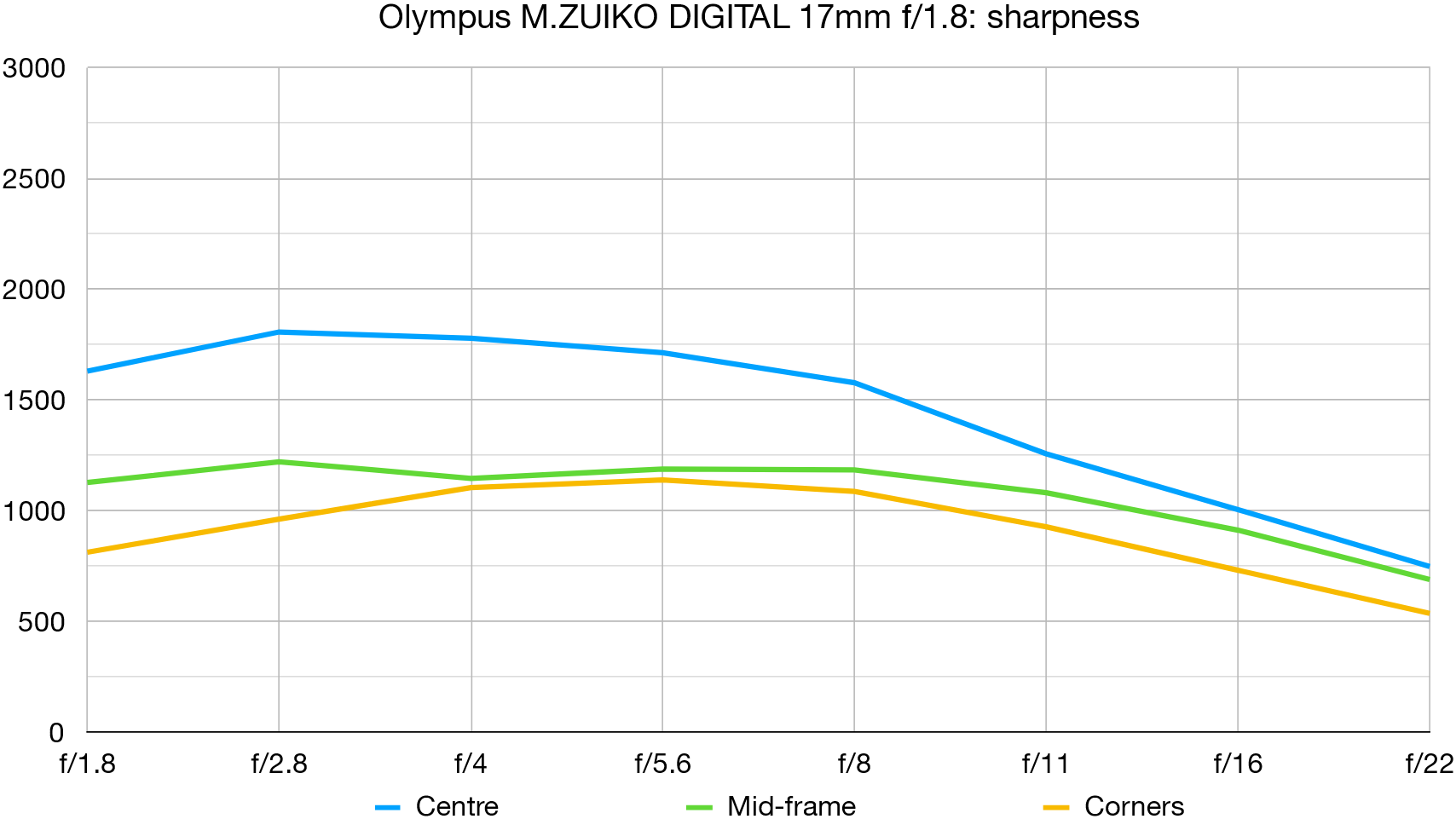
Center-sharpness is very good even wide-open at f/1.8, and is excellent between apertures of f/2.8 and f/5.6, before starting to drop off from f/8 onwards. The edges and corners only exhibit really good sharpness between f/4 and f/8.
Fringing:
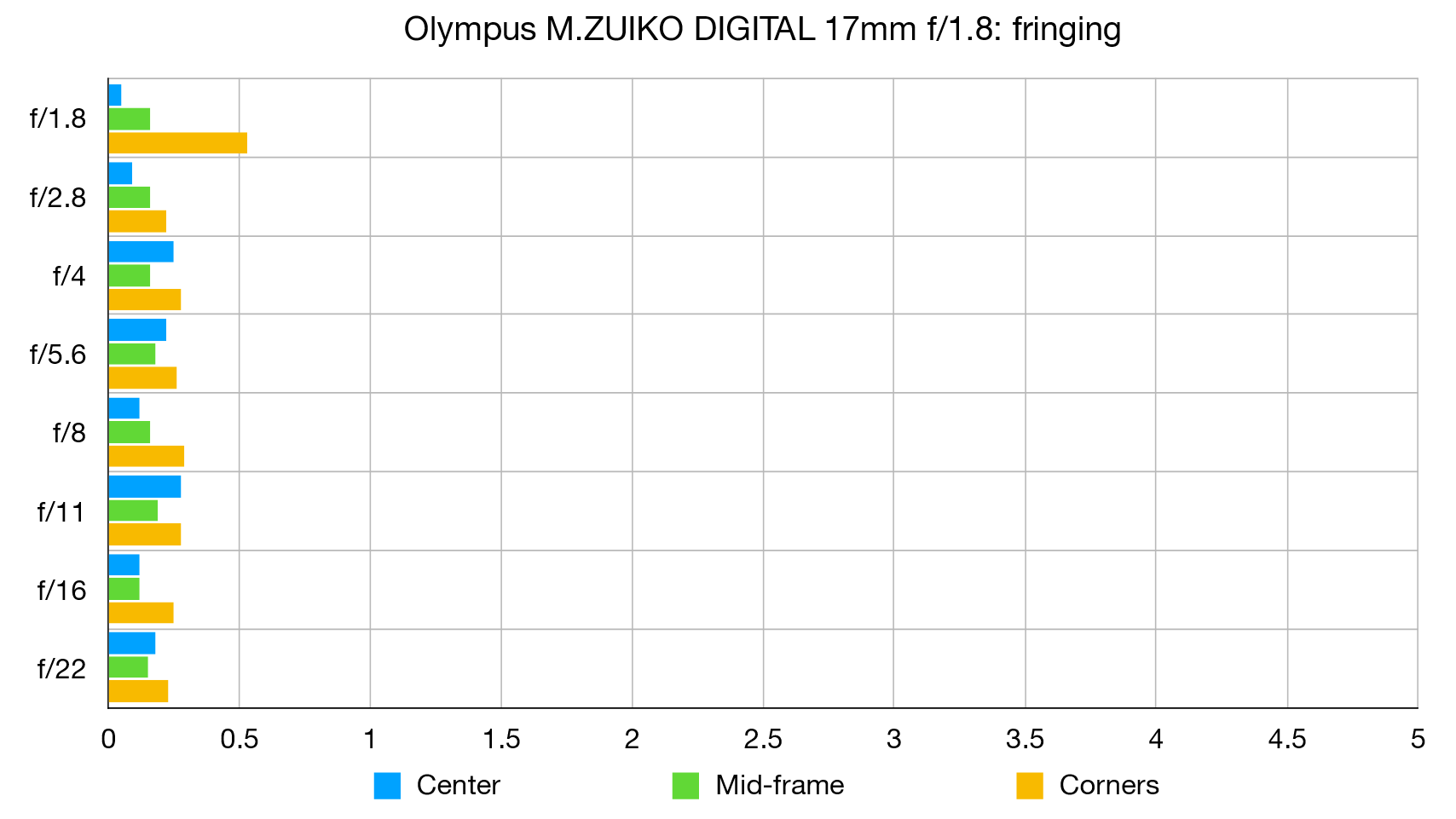
There’s the slightest hint of color fringing at f/1.8 but it’s of a very low order, and virtually disappears at narrower apertures.
Distortion: 0.2
Like many Micro Four Thirds lenses that rely on automatic correction, it effectively behaves like a zero-distortion lens.

Olympus M.Zuiko 17mm f/1.8 review: Verdict
Available in black or silver, the tiny Olympus M.Zuiko 17mm f/1.8 is barely bigger than a pancake lens. Thanks to the 2x crop factor of Micro Four Thirds cameras, it has an entirely natural, slightly wide viewing perspective, similar to a 35mm lens on a full-frame camera. Focusing is elegant both in auto and manual focus modes and it’s super lightweight despite featuring a high-quality metal build. All in all, it’s a great lens for walkabout shooting and for candid street photography.
Note that this lens has been replaced by the newer OM System M.Zuiko 17mm f/1.8 II, which adds weather-sealing and also includes a lens hood – but omits the manual focus clutch and distance scale.
Matthew Richards is a photographer and journalist who has spent years using and reviewing all manner of photo gear. He is Digital Camera World's principal lens reviewer – and has tested more primes and zooms than most people have had hot dinners!
His expertise with equipment doesn’t end there, though. He is also an encyclopedia when it comes to all manner of cameras, camera holsters and bags, flashguns, tripods and heads, printers, papers and inks, and just about anything imaging-related.
In an earlier life he was a broadcast engineer at the BBC, as well as a former editor of PC Guide.
- James ArtaiusEditor in Chief
You must confirm your public display name before commenting
Please logout and then login again, you will then be prompted to enter your display name.
